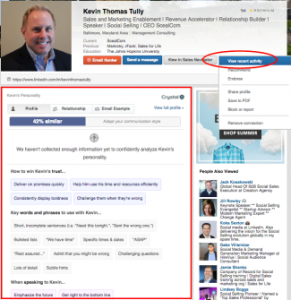Ask anyone outside of HR about internal communications best practice, and they’ll think of the corporate newsletter. It’s a deeply limiting belief — because as any HR professional knows, a huge chunk of business value is created in the linkages between people, when they communicate and collaborate.

That’s why the HR professional’s role is growing, even if it sometimes feels behind-the-scenes. More and more HR decisions involve technology that connects people within the business. As our workplaces move further apart, those connections — including home working, virtual offices and online meetings — are becoming ever more important.
With a greater choice of connections, of course, comes a greater chance of communication breaking down. We provide important tips on how to recognise any gaps between communications, including the do’s and don’ts when it comes to an internal communications strategy.
DO: Look at how your teams work together
It can be useful to look at how your different teams, departments and functions operate — both with each other and with the rest of the organisation. Teams will have different work styles and preferences based on their roles. This can also vary by geography and culture.
Also work with the departmental heads to see how they are operating today and the role of the digital workplace could help them perform even better.
DON’T: Control what they can talk about
Don’t be tempted to check or control the informal interaction between colleagues. As the workplace evolves, the trust placed in the workforce becomes critical. In a high performing culture team performance will be greatly enhanced when treated like adults!
DO: Give people a choice of technologies
The biggest single barrier to technology adoption is that no single tool or application will be suitable for everyone. Once you have profiled your users allow them freedom of choice in selecting the tools and collaboration methods which they are most comfortable with.
DON’T: Allow a total free-for-all
While it’s great to let people choose how they communicate, make it clear that going “outside the network” with unauthorised or untested apps is a no-no. If there’s confidential company data involved (and there always is) you’re risking not just privacy violations, but your company’s business assets.
DO: Identify your super-connectors
Many HR Managers will remember the connective value of the smokers’ room — chatting during cigarette breaks often made tobacco fiends well-connected within the enterprise!
Do choose a place, team, or geography as a pilot which you think will uncover issues which will inform decisions for the rest of the organisation. You may wish to select a pilot which is particularly challenging — if you can resolve these in the first instance you will be in good shape to tackle the rest of the organisation.
DON’T: Force everyone to become one!
Finally, never forget that while communications are vital, not everyone’s a natural communicator. There’ll always be people who do their best work alone or in very small groups. Always make sure the technology’s available… but don’t worry too much if the quiet ones aren’t using it.
Remember…
This is how successful organisations work, by creating environments that foster communication resulting in collaboration and innovation and most of all building an engaged and productive workforce.
And finally a communications disaster!
What could be the worst that could happen to an HR professional in an office with a poor culture of communication? Firing the wrong person on your first day could be pretty high up there as this communications horror story from HR Professional demonstrates.
On her first day this particular HR Manager was, in a clear case of poor internal communication, told to “fire Amy”. What follows next is probably best told in the words of this anonymous HR Manager… “ called Amy into my office (one on one) and after a two-minute meeting she was terminated and left the building. My boss approached me an hour later and asked for a recap of the meeting. He also asked me to evaluate my performance which I concluded was “done to a satisfactory level.”
He then asked “if the meeting was performed to satisfaction” then why was she still on the property and still performing her regular duties? I quickly looked at the person he was pointing towards and my heart immediately raced and my face turned as red as a radish. I had terminated the wrong person”.
Takeaways:
- Keep communications policies simple and short, but not strict
- Concentrate on the soft benefits before the hard ROI — that comes as a result
- Always put people first!
- Keep you communications flexible
- Think about how your employees want to communicate — not how you want them to
- Think of collaboration as many applications, but a single infrastructure
- Think of BYOD (Bring Your Own Device) as an opportunity for building a contented workforce, not a threat
To avoid any communications disasters read ‘The connected business: The rise of remote working and your HR policy, what you need to know’
This post first appeared on the Arkadin blog.
Business & Finance Articles on Business 2 Community(58)







